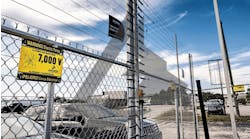Behind many shop operators’ success—along with years of trial and error and ongoing training and education—is a good management book.
We frequently hear from shop owners and managers about the strategies and insight they’ve gleaned from certain books. Often, the inspiration for processes that have helped shops stand out and thrive came from a late-night read. So FenderBender put together a list of some of the most beneficial, influential, and leadership-enhancing books for shop operators, based on recommendations from professionals who have used them to better their facilities.
Here are the top picks from five operators, along with insight on how the books have helped them grow as leaders.
The book: Think and Grow Rich by Napolean Hill
The leader: Kurt Mueller, owner, Kurt’s CARSTAR in Maryville, Ill.
Find on Amazon
The influence: Mueller says he was not a very good student in high school. He was a very good athlete, but when it came to academics, he kept up his C average only so he could compete in sports.
Despite his lack of interest in school, he read this book with great interest as a young man. It convinced him then that he could do anything. Later, when he became a business owner, he turned back to the book for inspiration.
The book covers a range of topics, including leadership secrets. It talks about making a decision and standing by it, communicating with employees, and organizing details. Mueller says he learned an incredible amount about great leadership from this book, and because of it began working on the details of his business—such as finances and marketing—rather than in the day-to-day shop operations.
Ultimately, he says it reminded him that he could create what he desired. He remembers that ever since he was a teenager he wanted to be a body shop owner. Today he’s not just an owner—he’s a successful one.
“Thoughts are things,” Mueller says. “You can achieve anything that you and your mind say you can.”
The book: The Toyota Way by Jeffrey Liker
The leader: Dean Hancock, owner, Bob Johnson’s Body Shop in Cayce, S.C.
Find on Amazon
The influence: Hancock has worked in the industry for nearly 30 years. But it was not until 2008—when he was out of work for six weeks recovering from surgery—when he read this book and had time to think differently about how to run the shop.
“The Toyota Way,” a classic for many collision shop owners, explores Toyota Motor Corp.’s management philosophies and production systems. The two main principles that the book focuses on are continuous improvement and respect for people.
When he returned to work, Hancock took some time to observe the shop. He sat on a stool and watched everyone work. He began looking for waste, and as the book recommends, he began asking “why?” five times to find the true answer to any questions he had.
And he found it. He found they were late delivering vehicles and that hidden damage was not being discovered because they were overbooked with work. He asked employees to list every problem that gets in the way of doing their jobs, and for their solutions.
The result? They began scheduling customers more efficiently, blueprinting vehicles, shortening meetings, and went paperless. Thanks to these changes, they cut cycle time from 12 days to six days. Profit margins got a big boost, from 5 percent to 13–14 percent, Hancock says.
“It changed the way we did business,” he says.
The book: The Ultimate Question by Fred Reichheld
The leader: Robert Tavarez, Vice President of Client Support, Caliber Collision Centers in Texas, New Mexico, Arizona and California Find on Amazon
The influence: Tavarez says customer service is one of the most important aspects of the multiple-shop operation (MSO), and that this book changed the way Caliber Collision Centers measures customer satisfaction.
The book introduces a formula called “net promoter score,” he says. The book says that if a customer considers grading a business one through 10, and gives a score of nine or 10, that person can be considered a “promoter,” or someone who would recommend the company to a friend or family. A person who gives a seven or eight is considered a “passive” customer—someone who won’t say anything positive or negative about the business. But a person who scores the business zero through six is considered a “detractor,” or someone who pushes customers away from the company.
Caliber brought this idea to one of their CSI companies, which changed the scoring system to help the shops gauge their “net promoter” score. So rather than showing a percentage of the customers who said they would refer the stores to friends or family, they began using the net promoter score, which Tavarez says is a much more powerful measure.
That’s because the formula more quickly shows where the problems are. So if a store receives many 10s and sixes, there is likely a bad employee there, Tavarez says. “Or if I’ve got a bunch of eights and not a lot of nines and 10s, they’re not wowing customers,” he says.
That kind of information has influenced shop leadership, management and training, he says. “It’s really caused our locations to make sure their focus is on taking care of our customers,” he says.
The book: Lean Six Sigma for Service by Michael L. George
The leader: Matt Govert, manager of Govert Auto Body in Merrillville, Ind.
Find on Amazon
The influence: Govert wanted to learn more about lean processes, which he had originally heard about when he worked for Ford as a financial analyst.
As a manager in the collision industry, he had a sense it could help him run a better shop. A priority was to begin reducing paint waste, and to reduce bottlenecks created by scheduling problems.
So he pored over the book, which he says isn’t an easy read because it’s full of math equations. “It’s not a book that’s going to keep you on the edge of your seat.”
But it did help him improve his shop. He reduced paint inventory. Rather than a typical $1,000 worth of paint always sitting on the shelf, he now keeps $300 of inventory.
His shop also increased touch time from 2.2 hours a day to 3.8 hours, thanks to scheduling improvements. His team learned that if they bring in four or five cars per day, rather than bringing in all of their work for the week on Monday, they are more productive.
“If you’re a production manager and want to improve your shop, this [book] gives you a structure and a way to go about trying to improve and identify what processes need to be improved upon,” Govert says.
The book: How to Win Friends & Influence People by Dale Carnegie
The leader: Nick Gjomeric, CEO, Collision Plus Auto Body Repair Centers in Illinois
Find on Amazon
The influence: Nick Gjomeric was a young boy when his mother gave him this book to carry with him. He didn’t know it would one day influence him as a leader of a collision repair business.
The biggest thing he learned from this classic is that “you can’t manage people if you can’t manage yourself.”
This is key in the collision industry, when a customer is angry about something they didn’t get, or when an insurance company is fighting you on repair costs. It can be easy to get caught up in mood swings and treat others poorly because of it. “You take it out on your employees, your wife or your girlfriend,” he says. “It’s not fair.”
Thanks to this book, he learned how to stay more even-keeled, and he improved as a boss and coworker. “That’s managing yourself,” Gjomeric says.




